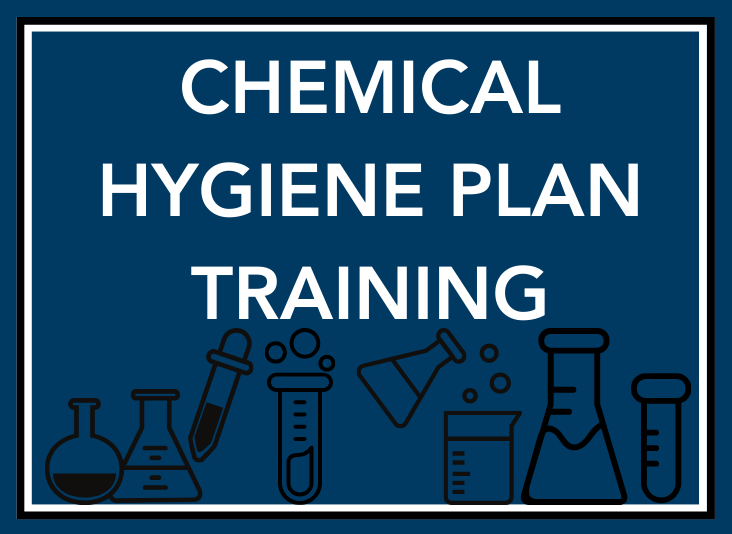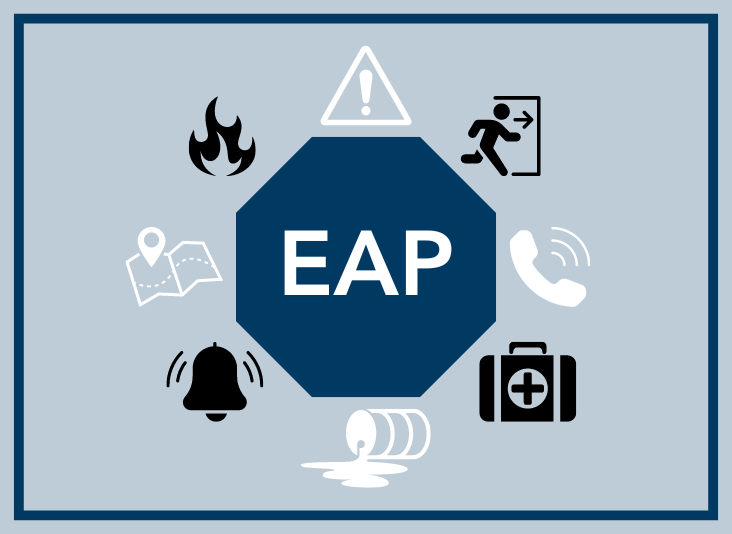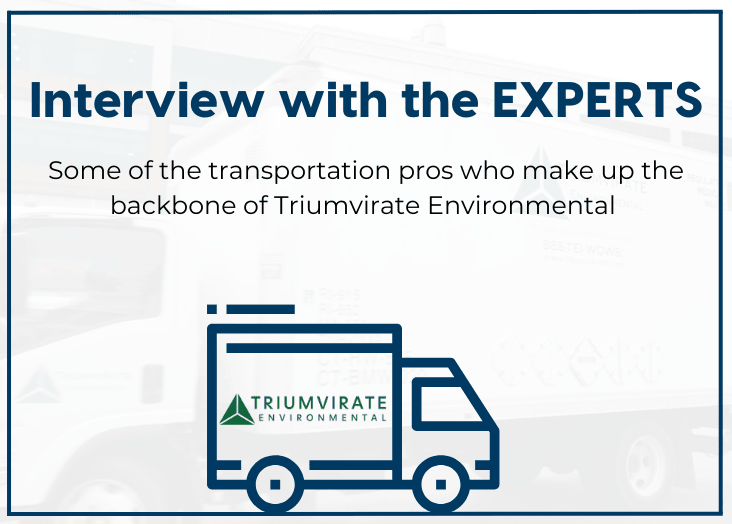Training Puts the 'Action' in Emergency Action Plan
This fifth blog of our EHS and compliance training deep-dive blog series analyzes emergency action plan training requirements.

Let’s face it—even if you are incredibly careful, emergencies will arise in life sciences, healthcare, higher education, and industrial settings. While the exact definition of “emergency” may vary depending on local, regional, or federal regulatory designations, it typically applies to situations such as:
- Fire or excessive heat
- Medical incidents, when there are injuries or other medical events like cardiac arrest or stroke that require urgent care
- Exposure to, or uncontrolled release of, hazardous materials, including:
- Chemicals
- Infectious materials
- Hazardous waste
- Violent incidents, such as terrorism, local unrest, or mass shooting
It is crucial that all on-site staff members know how to respond to any emergency. That’s where an emergency action plan (EAP)—and relevant training to that EAP—come into play.
EAPs Vital to Combat Myriad of Workplace Events
There were 5,486 workplace fatalities in 2022—a death every 96 minutes, according to the Bureau of Labor Statistics (BLS). Human health concerns are only part of the toll that workplace emergency events take, however; according to the Environmental Protection Agency (EPA), 3.3 billion pounds of regulated chemicals were released by land, air, and water in 2022, according to Toxics Release Inventory (TRI) data.
While reporting requirements and safety initiatives are driving an overall reduction in these negative events, there are still an incredible amount of them. This underscores the importance of having an EAP developed for your facility—and of properly training your workers to follow and execute it.
It could realistically only be a matter of time before an emergency occurs at your facility—are you prepared?
EAP Training Enforcement
Worksite emergencies can be serious and far-reaching. As such, EAP training enforcement is strict. The Occupational Safety and Health Administration (OSHA) is the primary federal enforcer, along with the EPA. Multiple other regulatory agencies can also evaluate compliance, including any local environmental or emergency response organization; this can include the fire department or a Water Resource Authority (WRA). Tangentially, these organizations need to know there is a response plan in the event they are called in to provide emergency mitigation or cleanup.
Any of these enforcers may have their own EAP training regulations that differ from and augment the federal statutes. This is particularly so in cities or other densely settled locations. The busier the locale and the larger the buildings, the more complex the evacuation plans and associated emergency response.
Any of these regulatory bodies can also impose noncompliance fines—and will do so:
- During routine annual inspections
- After incidents
- If or when they are alerted that EAP requirements are not being followed
Besides introducing safety concerns, infractions are expensive. OSHA alone can level fines of up to $16,131 per violation, per day.
It is truly in an organization’s best interest to implement and train to a thorough EAP—community and facility safety, compliance, and financial health all rely on it.
EAP and Training Essentials
So what exactly constitutes effective EAP development and training? EAPs must be exhaustive, outlining every sub-plan, step, and need-to-know point in the event of an emergency situation. They should be used to inform workers about everything they need to know to keep themselves safe in the workplace, especially when something goes wrong.
This should include:
- Evacuation protocols based on facility layout and room configuration, including:
- The best evacuation path
- How to understand facility maps
- Where to gather once evacuated
- Whom to contact in the event of an emergency, including:
- Where to find the relevant contact list
- What contact information is available (email, phone, etc.)
- The locations of key tools and gear: first aid kits, automated external defibrillators (AEDs), and other emergency response equipment—even if they are not trained to use it
- The varied response types, based on the specific emergency (chemical versus biological, etc.)
- How to recognize an emerging or ongoing emergency
Ultimately, an EAP and associated training program must be simple yet thorough. Managers must ensure the EAP covers all necessary elements, but in a way that workers can understand easily. Training helps ensure the EAP is followed precisely—and covers all relevant elements effectively and compliantly.
As such, training must be performed at the point of hire and on an annual basis after that, to ensure they are current with all the plan’s relevant details.
Your EAP Training Demands a Custom Touch
The very nature of EAPs mean that included information is very specific—and as such, a good EAP training plan is one that can be customized to each facility’s specific needs. A generic, out-of-the-box training won’t enable the learner to visualize each individual location’s:
- Evacuation routes
- Maps
- Resource locations
- Emergency contact information
- And more
Lacking that key data, a worker will only have the vaguest and most superficial notion of what the EAP demands—and thus, safety will be sacrificed for the whole worksite.
A custom EAP training program, on the other hand, allows the learner to envision the vital elements of a workplace EAP—the maps, the emergency response tools, and key players that will enable an efficient, swift, and comprehensive response. Thus trained, they can minimize emergency fallout on fellow workers, the surrounding community, and the environment.
One such effective training program can be found with EHSLearn™. This premier training service enables you to create fully customized training programs—maximizing effectiveness and learner retention. Interested? Start a conversation with us today about your EAP training needs.







